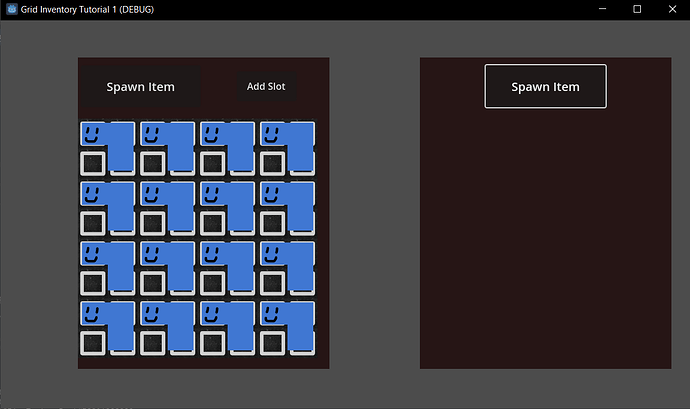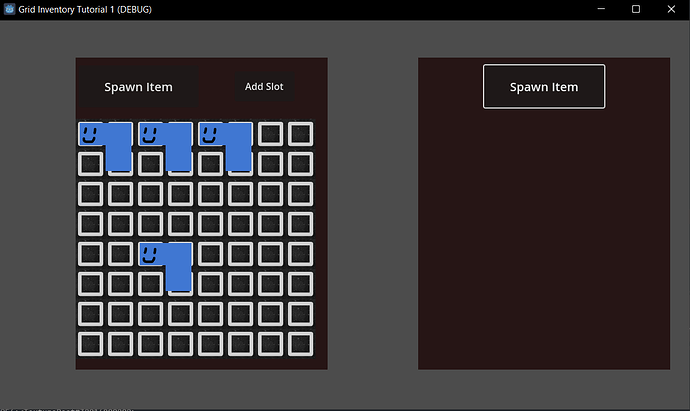No problem! One other thing I’d encourage is getting a bit playful with the code. I know it can be a bit daunting at first when things seem more mysterious, but remember that no one knows what you’re doing minute-to-minute, it’s just you. So comment some crap out! Huh, okay, this line is busted, but I’m not really sure what it’s for… what happens if I just don’t run it? Oh, okay, now it kinda works, but it’s not in the right place. It looks like it’s taking some kind of global position. What if I just give it the global position of the first slot? Oh okay, now all the items are all snapping to the top left. Oh, okay… What if I give it the position of a_Slot? Oh I see… okay…
Something that separates watching a tutorial (or even taking my help), versus writing the code yourself, is the process. Writing code for yourself is like sculpting. You start out with a shapeless blob that does nothing, and little by little you add the bits that give it form. You shouldn’t expect to be able to just start at the top of the file and dump out perfect code top-to-bottom. It’s about being 25% of the way there, and then adding a little bit more and now being at 30%. And then just a bit of this, to get us to 40%, and eventually we get to 80%, call it good enough and ship it! 
Watching this tutorial, it had a little bit of that energy, but it very much felt to me like he already had done this in practising and knew where he was going before he started. He made some variables long before he needed them, etc. You won’t be like that, though, when you’re figuring stuff out for the first time, and that’s fine! Push some clay around!
The debugger can be very helpful in being like “what the heck is this even doing…”, and comments are also great for getting some logic out of your way, without actually getting rid of it. (If you didn’t know, Godot’s editor allows you to highlight several lines and hit Ctrl-K to comment them all out, and also to uncomment them). There are some times where I comment out the real logic and add a line that just makes some manual data. I know this line will never make it to production, because it’s hard-coding something that’s meant to be dynamic. But that doesn’t matter, because it’s really easy to delete lines later. What I’m doing now is experimenting. So I’m feeding stuff in, to see how the code responds. And once I’ve figured out how this thing works, then I’ll figure out how to get the real data. Or sometimes it’s about isolating where the problem is. If I give this piece known good data, does it work? If so the problem is in my logic that’s getting this data. And if it still doesn’t work, then the problem is the way this data is being used. That just cut my bug search-space in half!
I guess what I’m saying is that the process is about making a game, but that doesn’t mean that every single line written needs to ship in the finished product. Sometimes what’s really valuable is trying stuff out until you figure out what you don’t know, then you can focus on using that new knowledge and intuition to make the game.
Good luck!
![]()

